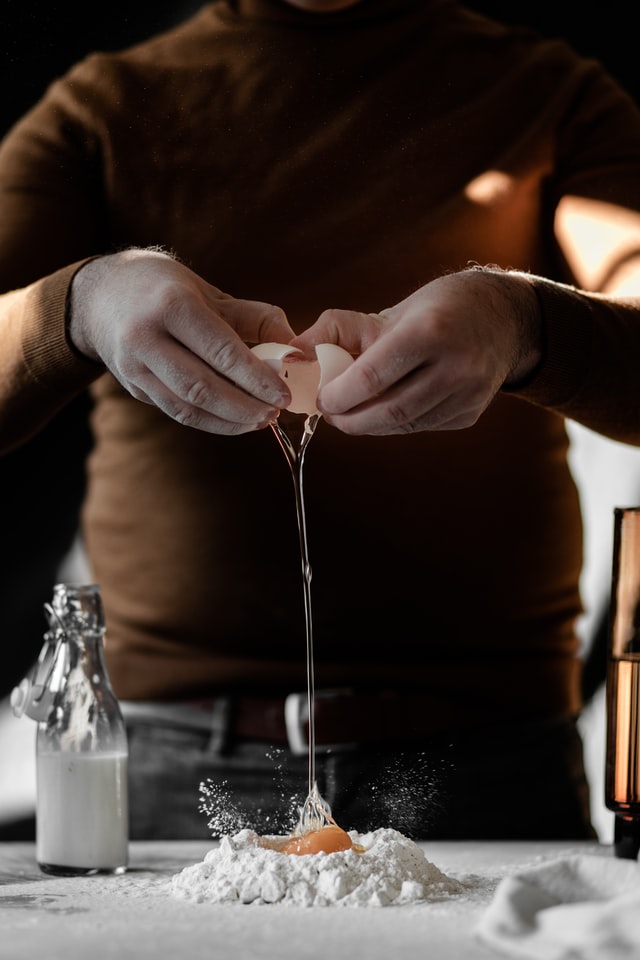Mashed potatoes are important, and I take them very seriously. The epitome of comfort food, a bowl of roughed up spuds is the easiest way to turn an otherwise “healthy” meal into comfort food.
I’ve mashed a lot of potatoes a lot of different ways, but I usually employ the same two or three hacks when making them for myself and my loved ones. I’ll either mash ‘em with mayo or onion dip, and I’ll often cook the spuds in the microwave, especially if I’m making fewer than two pounds of potatoes.
But there is another, newer mash that threatens to dethrone the mayo mash—a mash recipe that is preposterously rich and decadent, yet does not hinge on loads of dairy. Actually, it’s barely a recipe. It’s more of a maneuver. An addition. A hack, if you will. What I’m trying to say is, you should add an egg yolk to your next batch of mashed potatoes.
Egg yolk mashed potatoes are basically a more intense version of mayo mashed potatoes. (This probably sounds bad if you’ve never tried mayo mashed potatoes before—go here to educate yourself.) Mayo is an emulsifier. It marries the hydrophilic with the hydrophobic, creating a smoother mash while adding a tiny bit of sweetness and tang. Mayo mashed potatoes do not taste like mayo (unless you add too much).
Similarly, egg yolk mashed potatoes do not taste like egg yolks, though they certainly are yellow. They don’t taste creamy. They just taste rich (almost impossibly so). They do, however, feel creamy, because egg yolks are also emulsifiers (and are, in fact, the ingredient in mayo that makes it an emulsifier). The yolk emulsifies water and fat to create a cohesive, velvety bite, while providing a little fat and body of its own.
You can add an egg yolk to nearly any existing mashed potato recipe. If you are worried about the yolk flavor being too dominant, start with a ratio of one yolk for every pound and a half of potatoes. I like a more aggressive ratio, however, and do a yolk for every pound.
By now you are probably looking for a quick and easy recipe to help you “get” the power of yolk potatoes, I I happen to have one ready for you (because my job requires it). It’s a slightly adapted version of my microwave mashed potatoes, the adaptation being the addition of an egg yolk. If you want to ease your way into the richness, up the mass of potatoes to 1 1/2 pounds.
Egg Yolk Mashed Potatoes
- About a pound of potatoes, cut into 1-inch chunks (I usually use 4 rinsed, unpeeled Yukons)
- 1 egg yolk
- 3/4 teaspoon salt (or more to taste)
- 2 tablespoons of butter (about 1/2 tablespoon per potato)
- 2 tablespoons half & half (or cream or milk)
Place the potatoes in a microwave safe bowl or dish, cover with plastic wrap, and make a half-inch slit in the top. Microwave the potatoes for 9-12 minutes (depending on how many potatoes you have), until they can be easily pierced with a fork. Remove them from the microwave and roughly mash them with a large fork, a big wooden spoon, or a potato masher to let any excess moisture evaporate. You can also press them through a ricer (my preferred method).
Add the butter to the hot potatoes, combine the egg yolk half & half in a separate bowl, then add the egg and dairy mixture to the potatoes, mashing and stirring quickly to ensure the egg doesn’t cook into solid little bits.
If you are worried about the yolk cooking the moment it hits the steaming hot potatoes, you needn’t be. As long as you get to stirring fast, you shouldn’t have any issues. (If you are nervous, you can also melt the butter into the half & half, then whisk little bits of the warm dairy mixture into the yolk to temper it, but it’s not strictly necessary.)
Serve immediately—with extra butter, if you are so inclined.
This article was written by Claire Lower from Lifehacker and was legally licensed through the Industry Dive Content Marketplace. Please direct all licensing questions to legal@industrydive.com.
![]()
